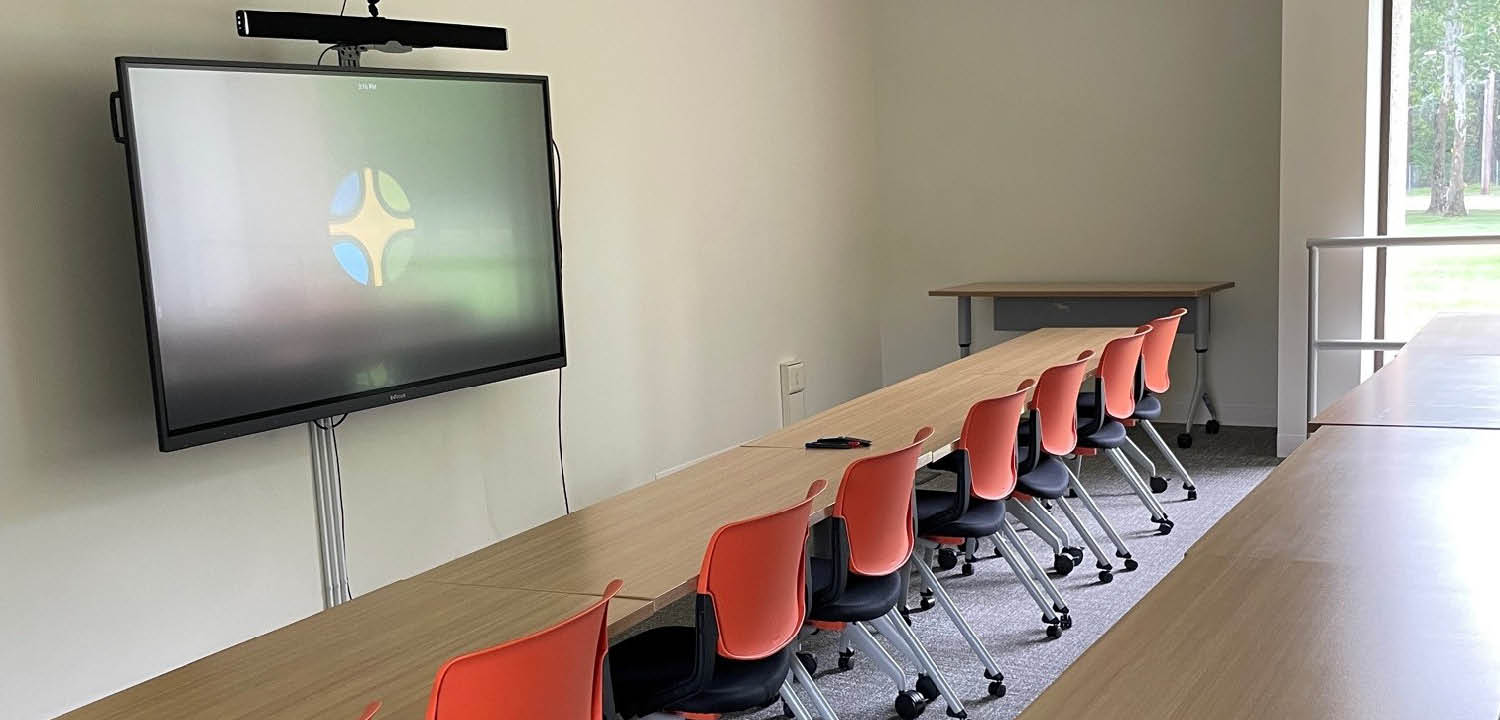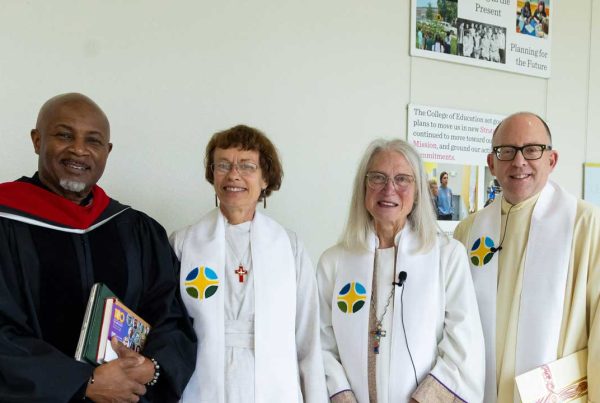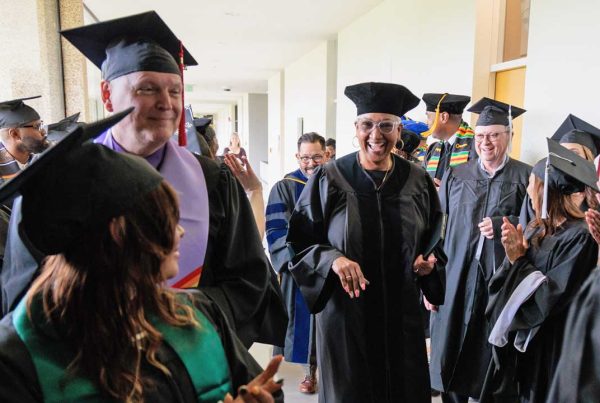The start of each academic school year brings with it exciting new beginnings. This fall, CTS celebrates the start of the new academic year with some exciting new upgrades. The CTS technology team has been hard at work implementing new classroom technology that makes hybrid learning as positive and high quality an experience for students attending online as it is for students attending in person. During the first year of the Covid 19 pandemic, it became necessary for all higher education institutions to adapt quickly to make online learning possible. Often, this was done urgently to make sure instructional time was not lost, but the need for immediate implementation did not allow ample time for long term planning. As health and safety regulations have changed and vaccines have become available to all students and staff, in person learning has become possible again. However, the frontier of classroom learning will likely never look the same.
CTS has made significant strides to analyze what technology our classrooms need today and plan ahead for what they will need in the future. These efforts led to some major classroom upgrades for the 2022-2023 academic year. The CTS classrooms located below Faculty Row were all outfitted with identical equipment so that they all function the same way and have the same high-quality technology. To learn more about how the new technology will benefit students and faculty, CTS Content Producer Stephanie Seeger had an in depth conversation with CTS Education Technology Specialist Melissa Trahyn.
What does the new classroom technology look like in each room?
Melissa: Each of the CTS classrooms under Faculty Row has a screen at the back of the room facing the instructor, 2 cameras (one with a view of the room and one with a view of the instructor), 5 microphones that pick up all sound, and a smart whiteboard at the front of the classroom.
The camera focused on the instructor follows the instructor around as they move, allowing faculty members the freedom to use their natural embodied movements in teaching. The screen in the back allows the instructors to feel like they can talk facing all students, whether they are physically in the room or attending online. Think of it like the last row in the class – that board is part of the classroom circle and conversation. It shows pictures and video feed of all the students attending class virtually.
This arrangement makes it more comfortable for all students – for example, when classes were fully in person, you would have students who choose to sit in the front row who regularly speak up and others who choose to sit further away and observe before they speak out. This new arrangement makes it feel much more like the students attending from home are part of the group, not individual students attending separately. The instructor doesn’t have to turn around to talk to their Zoom camera to address people not in the room – just by teaching facing the class, they are able to address those in person and those participating online.
How is this technology better than traditional Zoom meetings?
The new technology and room setup takes away from online distractions. For example, when people at home stand up, move around, or have a pet move past their camera, the people in the classroom aren’t seeing that. The teacher is able to be front and center and can engage all the students in the same manner.
The technology is called Zoom Room. The room itself hosts the meeting, runs the meeting, and captures all whiteboard notes, video, and audio so that it can be saved and posted to online class sessions. Classes can do interactive activities using the smart whiteboards. In the room, students can come up and take the stylus marker and write on the board. If they’re at home, students have the ability to annotate the white board notes and add their input. This way, we can have hybrid classes, but still have a strong feeling of participation. Professors don’t have to lose information when they erase the whiteboard; they can add a screen and do something else on the board, then pull previous whiteboard content back up. They can upload the whiteboard notes to the weekly class session in Populi or to the lesson for the week.
In true hybrid classes, if Covid limits the number of students able to be physically together in one classroom, larger groups can still meet in person and online – in one classroom or in multiple classrooms. If there are more students in person than can safely meet in one room, Professors can link two rooms together. In person participants can be split between the two rooms and participate just as fully as if they were all together in person.
What are some of the challenges of implementing new technology?
Because the technology is new, there will be a learning curve as professors and students get used to using the classrooms and taking full advantage of the functional capabilities. We are working with professors to train them on not only how the technology works, but also brainstorming with them on how they can use the board to meet the needs of their different classes.
There are also some slight differences in technological setup between the CTS classrooms below Faculty Row and rooms shared with the Butler School of Education. All rooms still have updated technology, but faculty and students will have a slightly different classroom experience.
Faculty are redesigning how they teach for the hybrid classroom expereince. Although it will take time for faculty, students, and technology to be in perfect sync, the effort is definitely worth the reward. This is no longer a way to make sure classes meet during Covid and survive an urgent pandemic’s unique demands – we are now in a planned ahead, sustainable hybrid model that increases accessibility while still mainining high-quality student experience and academic rigor.
How does this new technology advance the mission, vision, and values of CTS?
This technology creates an equitable experience for students across different mediums. Students who don’t have the means or capability to travel to campus every class session can now participate just as fully as students who attend in person everyday. Faculty are now able and encouraged to apply universal design as they develop courses to maximize student engagement for all students, whether they attend in person or virtually. Sometimes it can feel like attending online is second best to attending in person; we’re saying that is no longer true. Attending online is an equally valuable alternative that we care about and are committed to making as high quality as attending in person.
What are you most excited about for students as they interact with this new technology?
I want them to know that CTS cares what they learn and how they learn. We are doing everything we can to make their experience a good one, to make their experience something they want to keep coming back to class for, something they can learn from whether they are physically in the classroom or attending online. It’s about living our core values and showing our students that we care and value them, no matter where they are.






